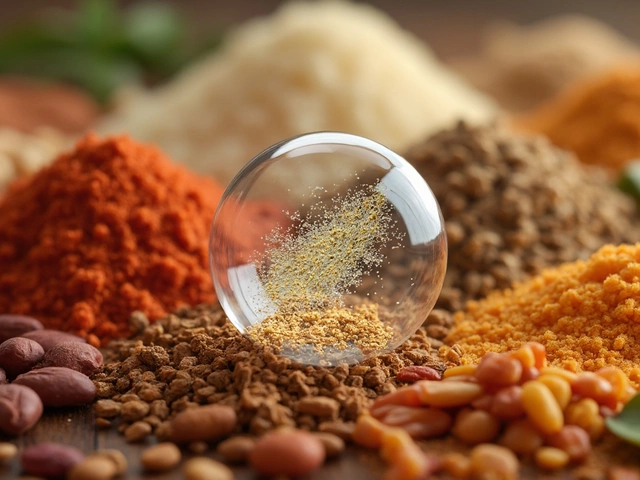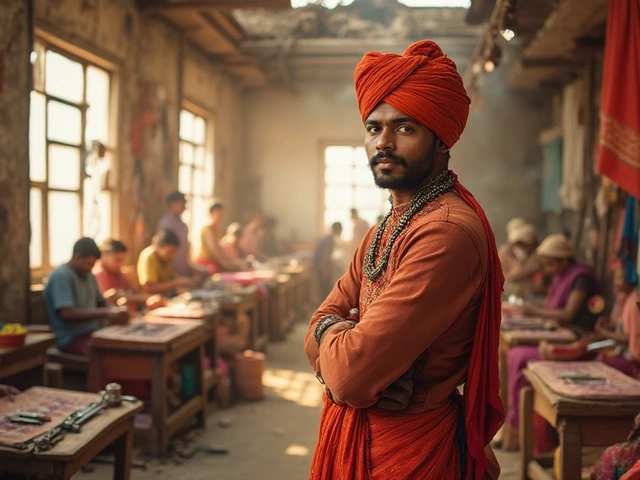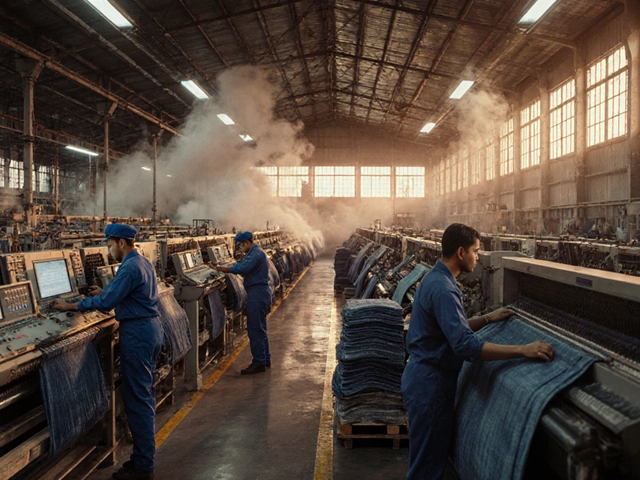There's a straight answer to who dominates the world of textiles: China. Pumping out more fabrics, clothes, and yarn than anyone else, China's factories have been in overdrive for decades. But that's only part of the story.
India isn't far behind. It’s actually the second biggest producer and has a long, colorful history tied to fabric making. If you wear cotton, there’s a solid chance it started life in a field or mill somewhere in India. Indian textile companies aren't just making basic fabrics—they’re sending clothing, home goods, and specialty textiles across the globe.
The numbers are huge. For example, last year China made around 45% of the world’s textiles, but India, with its lower labor costs and skilled workers, is closing in. The gap is shrinking as more global brands look to diversify their suppliers and hedge bets against supply chain issues.
- Who Leads Global Textile Manufacturing?
- Why is India So Important?
- Modern Processes and Industry Trends
- Major Textile Exporters and Buyers
- Tips for Navigating the Textile Market
Who Leads Global Textile Manufacturing?
Let’s get straight to it: China sits at the top as the world’s biggest player in textiles. The numbers are clear as day. In 2024, Chinese factories cranked out about 45% of all textiles produced worldwide. That’s nearly half of everything from t-shirts to towels. No other country is even close to touching these figures.
India is right behind, and its textile industry is massive too, especially in cotton production and garment exports. Still, China’s huge investment in tech, infrastructure, and its gigantic workforce put it in a different league. Here’s what the latest available data shows:
| Country | Share of Global Textile Output (%) | Main Strengths |
|---|---|---|
| China | 45 | Scale, technology, exports |
| India | 13 | Cotton, skilled labor, cost |
| Bangladesh | 6 | Ready-made garments |
| Vietnam | 5 | Garment exports, efficiency |
This dominance isn’t just about factories and workers. China’s government poured billions into keeping the supply chain running smooth, right from spinning the thread to shipping finished clothes all over the planet. India, with plenty of skilled workers and huge cotton crops, has built a strong reputation, but China’s ability to deliver anything at scale tips the balance.
"China has set the global pace on textiles for decades, not just in volume but in speed and adaptability," says a report from the International Textile Manufacturers Federation.
For anyone involved in textiles—whether it’s as a buyer, designer, or business owner—understanding these numbers makes it clear why most global brands still lean heavy on China and, increasingly, India. But watch this space. With rising costs in China and brands looking for alternatives, the race is heating up and more countries are stepping up.
- China leads in sheer output and exports.
- India is strong in natural fibers and competitive pricing.
- Bangladesh and Vietnam are snapping up garment orders, especially as brands diversify.
If you’re searching for the biggest textile manufacturers, start with China, but always keep a close eye on India and its rapid changes. The competition and opportunities are seriously worth tracking.
Why is India So Important?
India doesn’t just pop up in textile talks by accident—it’s a powerhouse for a bunch of reasons. First off, India is the world’s biggest producer of cotton and jute, and it’s right at the top when it comes to silk and polyester production too. If you look at pure numbers, more than 45 million people in India work directly in textiles, and over 100 million more depend on this industry some way or another. No other country after China matches that kind of workforce or scale.
There’s serious variety here. From huge, modern factories that pump out fabric for major brands, down to family-owned workshops using handlooms that have been around since before selfies were a thing. These smaller operations make India a leader in unique, traditional textiles that you just can’t find anywhere else.
When it comes to exports, India is a big deal. According to the Ministry of Textiles, in the financial year 2023-24, textile exports brought in over $40 billion. That's not just shirts and bedsheets—India is a major supplier of raw materials, threads, yarns, and finished goods to more than 150 countries.
Cost matters too. Labor costs in India are generally lower than in China or Europe, which makes manufacturing here a smart move for global brands trying to keep margins healthy. Plus, the Indian government throws in extra support: lower taxes for textile exporters, special industrial zones, and easier access to loans.
Why does this matter to anyone interested in textile manufacturers? India is almost always one of your top options for supply partners—it can handle huge orders, unique designs, and short turnaround times. And because it’s always adapting, you find lots of sustainable and organic materials coming out of India these days, not just the basics. If you care about eco-friendly options, it’s one of the best spots to start your search.
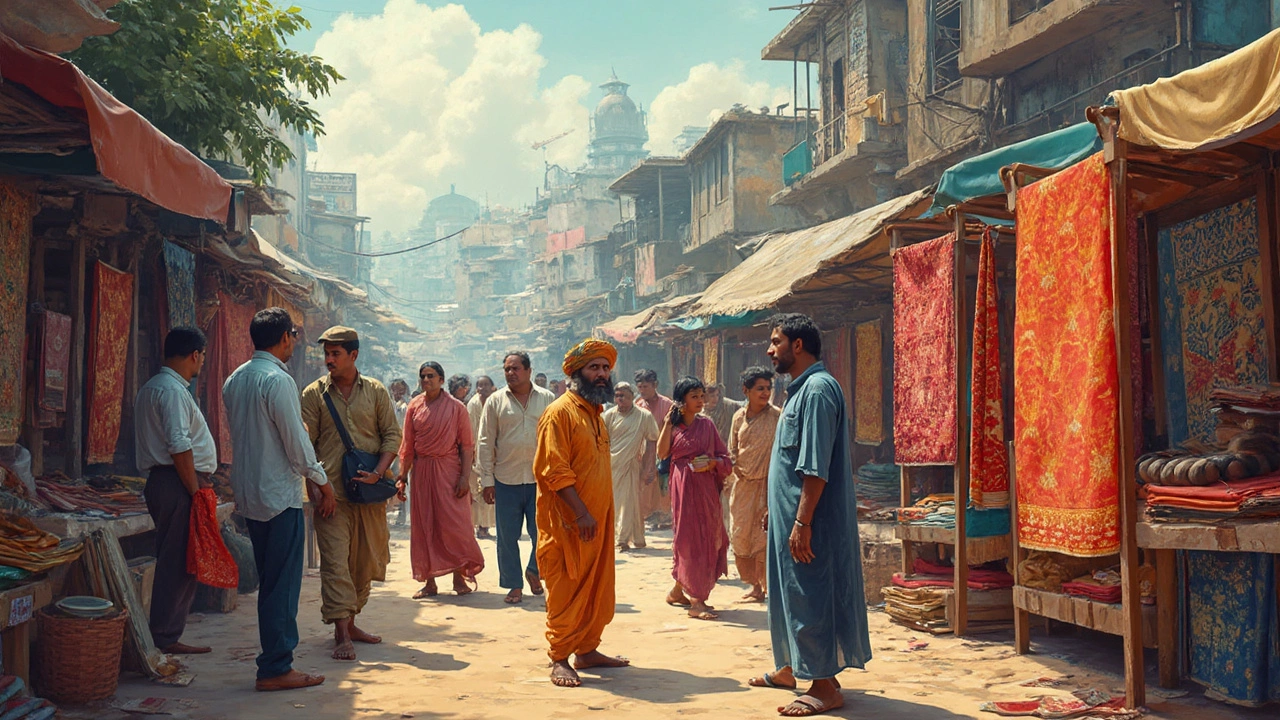
Modern Processes and Industry Trends
The textile game isn’t what it was twenty years ago—things move fast now, thanks to tech upgrades and global demand. If you peek inside a big textile manufacturer in India or China, you’ll spot automated machines doing jobs that used to take full teams. Spinning, weaving, dyeing, and even quality checking might run 24/7, using sensors and advanced software to keep mistakes low and speed high.
Let’s break down a few big changes that really matter:
- Sustainability: Eco-friendly fabrics are hot. Recycled polyester, organic cotton, and water-saving processes are in. Brands keep asking for cleaner, greener options, so plants now use less water and stick to safer dyes.
- Digital Printing: Instead of traditional screen printing, digital printers can now make sharp designs with less waste. This means faster delivery and more precise colors for fashion brands.
- Smart Textiles: Some factories, especially in India, are now working on textiles that can conduct electricity or change color when it’s hot or cold. Think clothes that track your heart rate or bedsheets that kill bacteria.
- Quick Reaction Supply Chains: Fast fashion is all about speed. Many textile companies use just-in-time manufacturing, meaning they only make stuff when an order comes in.
Here’s a side-by-side look at how modern tech is used in the two biggest textile countries:
| Process | China | India |
|---|---|---|
| Automation | Widespread in large factories | Growing quickly, especially in cities |
| Eco-friendly Production | New government rules pushing for it | Big focus on organic and recycled materials |
| Digital Printing | Mass adoption for fast fashion | Popular among boutique and export mills |
| Smart Textiles | Leading in R&D labs | Startups and institutes making headway |
If you’re eyeing the textile business, watch these trends. A rising number of mills in India now use solar energy for their power, and sensor-packed looms catch problems before cloth is ruined. Orders are tracked in real time, so delays and mix-ups are way less common than they were five years back. Stay sharp, because textiles are changing right under your nose—and the countries that adapt fastest keep their crown.
Major Textile Exporters and Buyers
If you check out a clothing label, chances are it says “Made in China” or “Made in India.” No surprise—these two countries dominate textile exports. But it’s not just about who makes the most. The global textile market is like a web with key players on both sides: the sellers and the buyers.
China leads every year by shipping the highest volume of textiles worldwide. India is next in line, quickly gaining more ground with its quality fabrics and huge range of products. Other big exporters include Bangladesh, Vietnam, and Turkey. Each country has carved its own niche, whether that’s fast fashion or high-end cotton.
If you’re curious about who’s actually buying all these textiles, look right at the United States and countries in the European Union. Big retail brands and clothing chains—like Walmart, Zara, and H&M—import billions worth of goods from Asia every year. Here’s a quick look at the top exporters in 2024, based on total export value in billions of dollars:
| Country | Export Value (USD Billion) |
|---|---|
| China | 306 |
| India | 44 |
| Bangladesh | 45 |
| Vietnam | 39 |
| Turkey | 17 |
India stands tall among textile manufacturers, especially in cotton and handloom segments. But China still holds the top volume spot, thanks to speed, scale, and advanced automation.
On the buyer side, the United States regularly tops the list, importing more than $120 billion worth of textiles and clothing last year. Germany and the United Kingdom are also huge markets, making Europe just as relevant for exporters. Fast fashion is keeping this flow strong, but there’s a growing trend for sustainable and ethical sourcing, so buyers are starting to look beyond just price tags.
So, if you’re in the textile business, knowing who the biggest exporters and buyers are can help you spot good opportunities—whether you want to source, sell, or just keep tabs on the next big shift in the global supply chain.
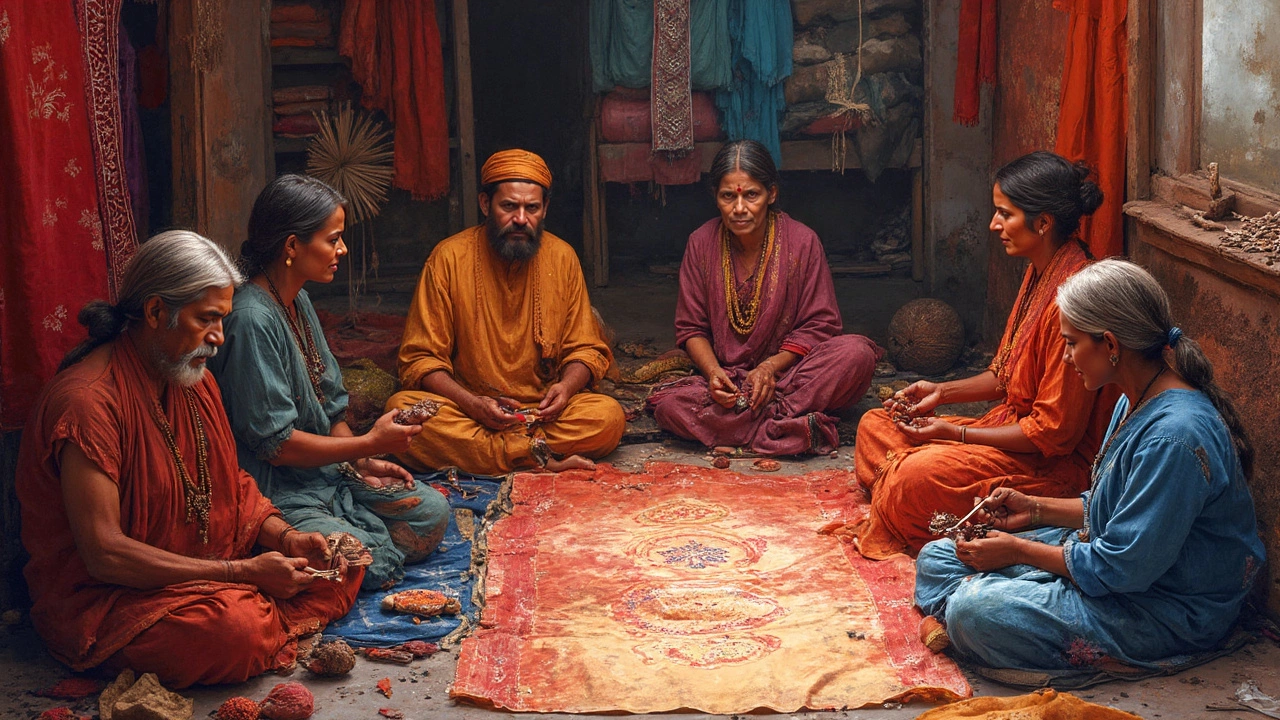
Tips for Navigating the Textile Market
Diving into textiles isn’t just about picking cool prints. You’ve got to understand supply chains, quality standards, and even how global politics can shake up prices. Here’s how to keep it simple—and avoid big mistakes—if you’re trying to source from top players, especially if you’re eyeing textile manufacturers in India.
- Check Origin and Certification: Make sure your supplier’s cotton or yarn is legit. Look for OEKO-TEX, GOTS, or BCI labels—these are gold standards for safe and sustainable textiles.
- Compare Lead Times: Indian and Chinese mills work at different speeds. Indian suppliers often deliver custom orders faster in moderate quantities, but China rules in mass production.
- Know Your Costs: Don’t just count fabric per meter. Factor in shipping, currency changes, customs (India’s average export duty is 10%), and any extra fees. Missing these can blow up your budget.
- Communicate Clearly: Spell out every detail, from thread count to finishing. Ask for samples—they’re cheap insurance against misunderstandings.
- Keep an Eye on Trends: Global demand shifts fast. Right now, denim, athleisure, and eco-friendly fabrics are big, so ask what’s new in your supplier’s line-up.
Big players like India and China can handle just about any request, but not every factory is made equal. If you’re looking at India, cities like Tirupur, Surat, and Ludhiana are textile powerhouses. It pays to pick regionally specialized factories—Surat for synthetic fabrics, Tirupur for knitwear, Ludhiana for woollens.
Check out this quick comparison of leading textile countries:
| Country | Market Share (%) | Key Strength | Main Export Items |
|---|---|---|---|
| China | 45 | High production volume | Apparel, fabric rolls, technical textiles |
| India | 13 | Diverse fibers & quick delivery | Cotton fabrics, garments, home textiles |
| Bangladesh | 6 | Cost-effective basic apparel | T-shirts, shirts, knitwear |
| Vietnam | 5 | Efficient garment assembly | Garments, footwear |
Small tip: Always visit the factory or hire a trusted sourcing agent. Having eyes on the ground in busy cities like Mumbai or Guangzhou weeds out middlemen, scams, and quality issues. Don’t skip this if you care about reliability.

